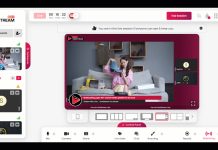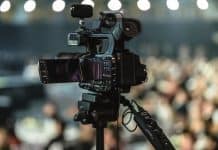
Just as there is a right way and wrong way of conducting oneself in almost all walks of life, there is proper etiquette that should be followed at trade shows to make the right impression as well as to successfully seek and secure good PR and valuable media exposure. After all, first impressions are often lasting and good PR sometimes is as simple as avoiding bad PR.
All behavior at a trade show, from appropriate event attire to professionalism in approaching trade media to recognizing those that have been of particular assistance at the show, is susceptible to scrutiny. It's paramount to always remember that you're not only representing yourself but rather your company at large.
Think Like an Owner
A rule of thumb that always comes in handy when approaching anything business related is to think as if you're the owner of the company. That “when-in-doubt” philosophy can generally veer any exhibitor or representative in the right direction in regards to anything trade show related, from deciding whether or not to wear a tie to how many cocktails are acceptable at a networking function.
What to Wear: Cater to Your Audience
Daywear: Find Your Balance
Appropriate tradeshow wear is essential to good public relations. How you present yourself is, for better or worse, a reflection of the company for which you work. It's important for trade show and marketing managers to strike the right balance between coming across accessible yet professional. For instance, in the technology industry the general dress code is fairly relaxed but the enterprise sales teams feel the need for suits. A versatile concept involves wearing something that can easily go from casual to more formal, such as cotton-blend, wrinkle-free, button-down logo shirts with khakis or nice (no-holes) jeans that can be dressed up as need be by simply adding a jacket or blazer. Another alternative is for booth staff to wear polo-style logo shirts in a color matching the ties of on-hand sales executives.
A general guideline is that attendees should be able to easily identify and discern exhibitors. Whether donning bright yellow logo T-shirts or the same color ties and dress shirts again depends on the show and its audience. In addition to helping with visual identification, a common color scheme creates a corporate identity, so be sure that dress choices are consistent with your messaging.
Dressing for Networking Events & Other Functions
Networking and other off-the-trade-show-floor events usually require a step up from exhibition attire, often calling for business casual. Generally, jeans should be shied away from. Higher-quality logo wear is acceptable. You want to represent the company without looking cheap, sloppy or underdressed, so beware of inexpensive logo wear. You get what you pay for.
Occasionally, there are opportunities to break away a bit from that corporate image at themed festivities, where the dress code follows suit. Examples of such functions are beach parties or Hawaiian luaus. So read the schedule of events in your trade show kit closely so you can pack that tacky tropical shirt. You want your company to be perceived as “good sports” who don’t take themselves too seriously!
If presenting a seminar or educational session, a business suit is customary while awards banquets and galas generally mandate more formal cocktail attire. Looking back to photo galleries of prior years on the show’s website is always a good point of reference.
Tattoos & Piercings
Unless at a body art convention, tattoos should be covered and nontraditional piercings should be obscured while exhibiting at trade shows. Individuality should be celebrated but not at trade shows where a corporate and cohesive image reigns supreme. This school of thought should be applied to anything out-of-the-ordinary, such as excessive make-up, jewelry and accessories, hair color and akin. Although individual representatives should attempt to stand out through their enthusiasm and knowledge, it's the company that should get center stage at a trade show.
Trade Show Tip: Don't Get Too Tipsy
Trade shows are widely recognized for their festive atmosphere. Exhibitors work hard all day and some often party equally hard come nightfall. It's advisable to keep the cocktails to a minimum as you don't want all your hard work to be in vain as a result of an intoxicated faux pas or indiscretion. This could result in a PR nightmare! Plus, you’ll want to be well rested and fresh for the following day of exhibiting or travel.
Let loose and enjoy yourself, but remain professional and keep in mind the job at hand and that someone is always watching!
Approaching Trade Media
At trade shows, there are always opportunities to meet the trade media in attendance in addition to receiving the contact list provided by producers. A face-to-face introduction is always preferable. Be sure to have business cards, other company literature and collateral available upon request. The key to establishing a good rapport with deadline-driven media professionals is timeliness. If they request any kind of information, quote, or artwork, a prompt turnaround is incumbent. Additionally, having press releases prepared in advanced so that only statistics or small details have to be filled in prior to circulation is essential in receiving coverage. Keep in mind editors don't like being inundated with requests and questions. Be available but not desperate.
The Gift of Promotional Giving
Bearing gifts makes you popular but often giveaways are costly, having negative impact on ROI. However, strictly from an etiquette and PR perspective, gifts should be nonoffensive, politically correct, and socially acceptable. Humorous gifts often are effective in leaving an impression but be sure your audience shares your sense of humor.
Attitude of Grattitude
It's always a good idea to show appreciation to anyone who contributed to your show’s success. Be sure not to overlook unsung heroes, anyone from the show producer to a truck driver who might warrant a “‘thanks for a job well done” or for going above and beyond. Keep in mind you might very well need their assistance next time around. The current trade show trend in bidding gratitude is gift cards ($5-$25) from coffee shops, restaurants and such. A thank you almost always has huge ROI.
Acknowledgement of trade media can go a long way. A note drafted on company letterhead or even an email directed to editors/reporters thanking them for their attendance and interest can turn out to be a good long-term investment as well. Good PR at trade shows/exhibitions is as much about building relationships as it is to write a good press release or come up with a good quote.
Photo by Craig Ferguson









![How Important Are Face to Face Meetings [INFOGRAPHIC]](https://eventstant.com/wp-content/uploads/faceToface_v11-sm-218x150.jpg)










When it comes to trade show etiquette, common sense doesn’t always prevail.